"Best. Veterinary Practice. EVER."
For rave client reviews and better patient experiences at your veterinary hospital, dont neglect the power of positive reinforcement for cats, dogs and people.
Pretty much all veterinarians and veterinary technicians have the basic idea of what positive reinforcement is, but how are we applying it in our practices? Most of us have a treat jar for our dogs, but what about our cats-and most especially our clients?
Practice owners and associates, here are some great examples of how we can go beyond the reception area cookie jar-for all species in our veterinary clinics ...
Food
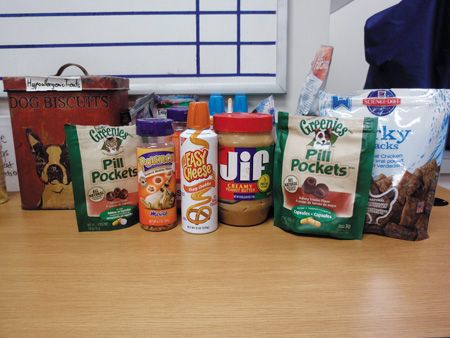
These food treats bring all the dogs to the room. (Photo courtesy of author.)Dog: Everybody has a treat jar, but what about other things? Peanut butter or squeeze cheese in a 6cc syringe case is a high-value treat for many dogs. (You've heard about it, but are you trying it yet?
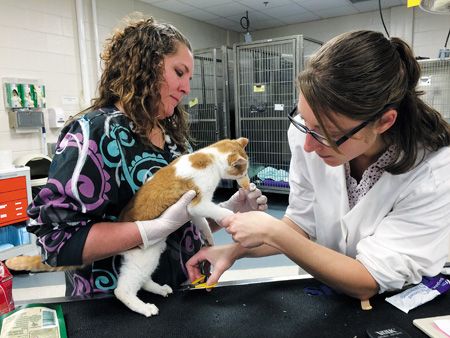
Do your feline patients like your nail trims this much? (Photo courtesy of author.) Cat: Yes, cats will eat in your clinic! Forget the stale crunchy treats and offer them something higher value. Canned cat food, tuna, baby food and squeeze cheese all work well. (For a special high-value snack, some cats go crazy for green olives. I kid you not [see below].)

It's "no martini, no problem" for this happy camper. (Photo courtesy of author.)

Refrigerated treats for two-legged clients. (Photo courtesy of author.)Client: Don't forget snacks for your clients. There is no more popular place in the lobby than the coffee maker. You don't have to stop there though. Water, soda and even some baked goods or snacks provide that little bit of extra reinforcement that your practice is something special. Keep it fresh though: Dogs and cats don't like stale cookies and neither do your clients.
Environment
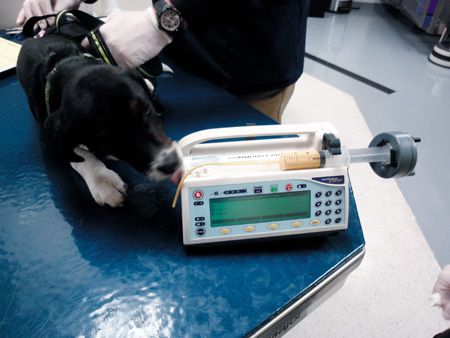
See? Sometimes syringes are a GOOD thing. (Photo courtesy of author.)Dog: A warm friendly greeting and quick treat reinforcement is just what the doctor ordered for many of our canine patients. They remember that good things happen right inside the door and start pulling your clients into-and not out of-your practice.

"Cool your jets, clinicians. I'll come out when I'm ready." (Photo courtesy of author.)Cat: Calm, quiet environments are best for cats. If you don't have a cats-only waiting area, consider moving your feline patients directly into an exam room and giving them some time to acclimatize.
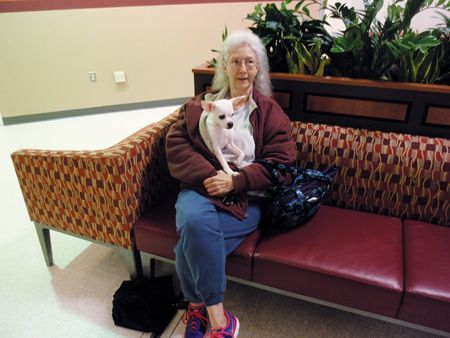
One species prefers the lap. (Photo courtesy of author.)Client: Theodore Roosevelt once said, “The human body has two ends on it: one to create with and one to sit on. Sometimes people get their ends reversed.” Make sure your clients aren't getting their ends reversed. Invite them to sit on something comfortable. A comfortable sitting end keeps them thinking how great you are.
Smells
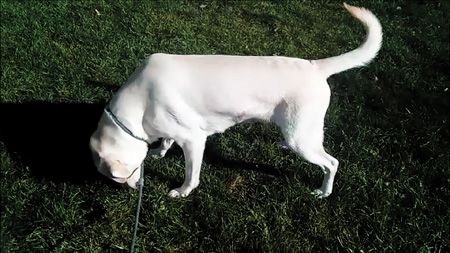
Place smells fine to him. (Photo courtesy of author.)Dog: With dogs, where one “goes” the others often follow. Make sure you're using an enzymatic cleaner for pet urine to clean up “accidents.” Not being constantly bombarded by all of those scent messages may help nervous canine patients to be a little calmer.
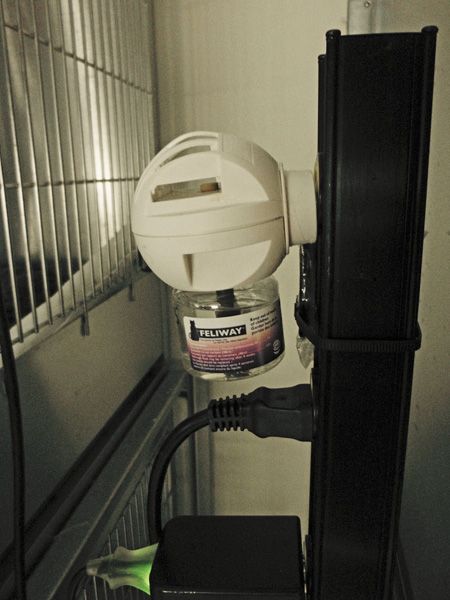
Our feline patients approve this message. (Photo courtesy of author.)Cat: Too much of what these sensitive felines get to smell in our hospital is pretty stressful. Add something pleasant to their experience. Pheromone diffusers or sprays such as Feliway can help reduce stress through scent.

I want to make a "Clean up on aisle 9" joke, but I won't. Wait, I just did. (Photo courtesy of author.)Client: What is your clients' first impression when they walk in the door? Have you become “nose deaf” to your practice? Are you using flowery spray scents or diffusers that make it smell like poo-pourri?
In a former practice, one of the first comments new clients made was, “it doesn't smell like a vet clinic.” Good ventilation, resilient cleanable surfaces and plain old-fashioned elbow grease keep your clinic smelling great and reinforce to your clients that you care about your practice.
Play time

Some patients prefer to skip "Fetch" and go right to "Chew it up now." (Photo courtesy of author.)Dog: Positive reinforcement for dogs isn't limited to food. Toys and attention work great too. Toss a ball around the exam room or get down on your hands and knees and return a “play bow.” After all, what's better than having fun with our patients?

Looking directly at cuteness like this too long can result in inappropriate giggling and grinning. (Photo courtesy of author.)
Cat: Playtime isn't limited to dogs. Cats like to play too. Break out a “thing on a string” or a Ping-Pong ball and watch them go. Playing also helps cats and cat clients relax and (maybe) forget they're at the vet.

Pirate doctor: "Arr, matey." Pirate dog: "Arf, matey." (Photo courtesy of author.)
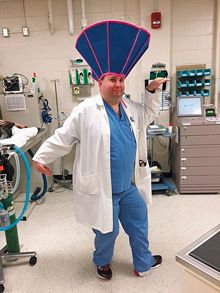
Queen Nefertiti has a weird new look at our hospital. (Photo courtesy of author.)Client: Don't forget to play with your clients too. Be silly, joke, let them see that you enjoy what you're doing. Being happy and showing it is contagious. It reinforces to your clients that your practice is a happy, fun place to be.
And, hey-if your practice isn't a happy, fun place to be, maybe you could use a warm cookie, a nice place to sit and a game of catch in the break room.
Come on … who's a good doctor?! Who's a good doctor?!
Dr. Nappier is assistant professor of community practice in the Department of Small Animal Clinical Sciences at Virginia-Maryland College of Veterinary Medicine.